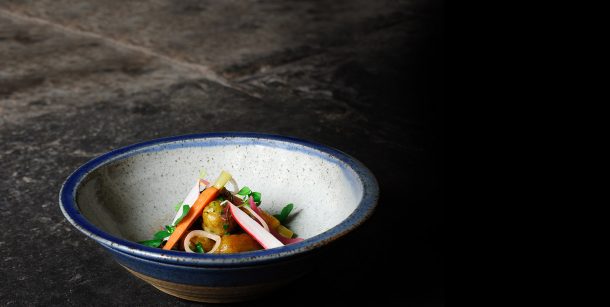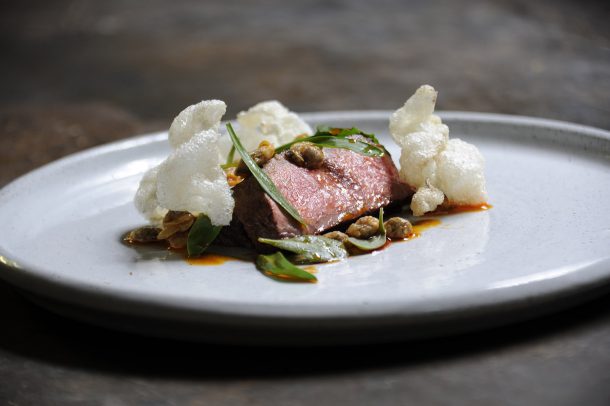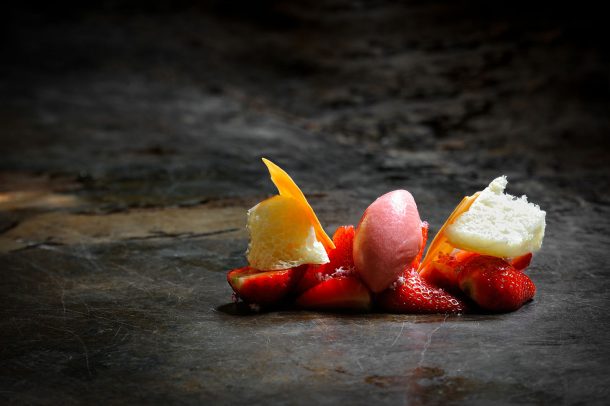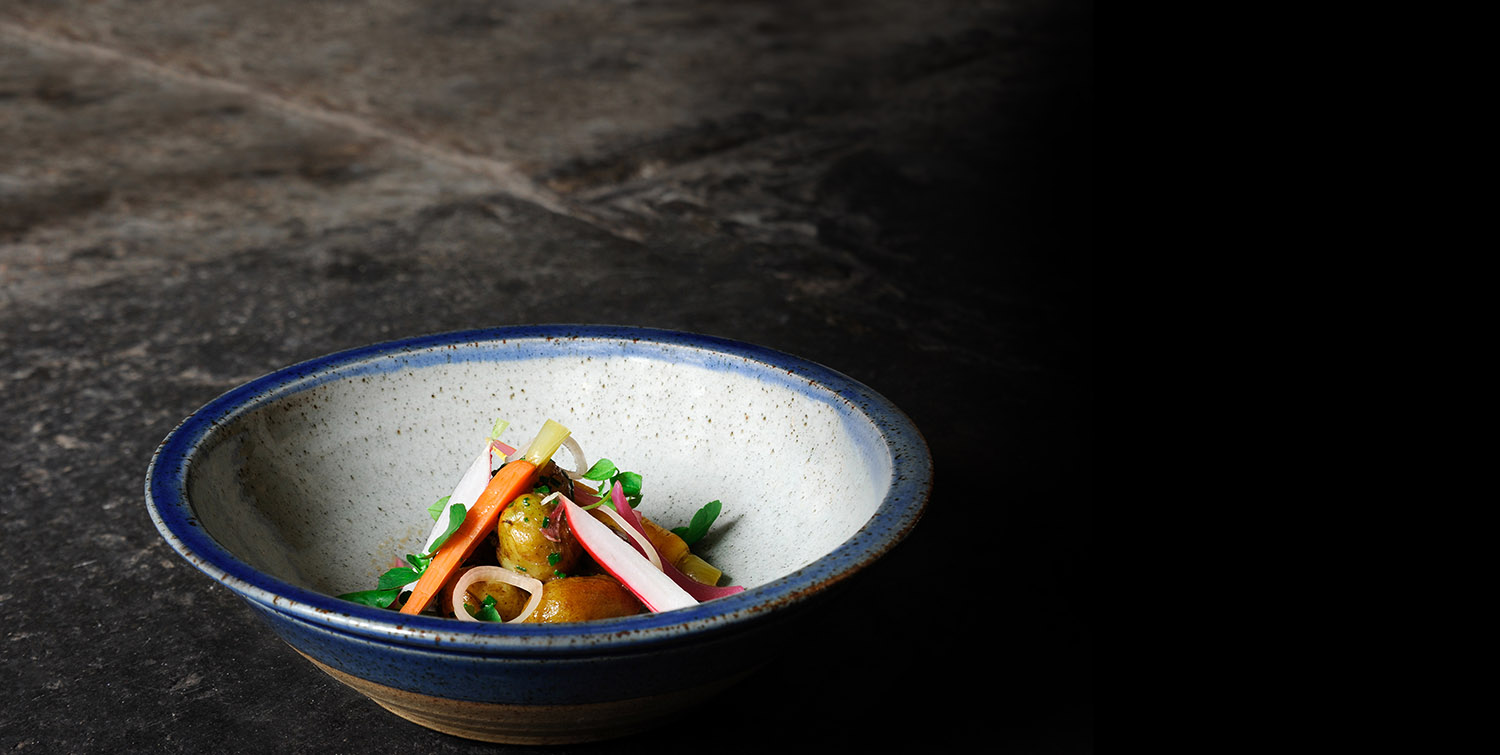Recreate one of our most popular events without leaving the house with Dinner and a Movie at Home. As part of day two of Virtual Members’ Week 2020 celebrating all things Renaissance, we are recommending our favourite Shakespeare film adaptations and sharing recipes from Salt’s Paul Foster, favourite of food critic Jay Rayner.
From the corridors of a Seattle high school to feudal Japan, the works of Shakespeare have been constantly reinterpreted by the some of the most renowned names in film and stage over the past 400 years. Transposed to new locales and time periods, the bard’s reimagined stories, continue to speak to audiences and inspire directors and performers centuries after they were first written. We are inviting you to think about that which you most love about England’s greatest playwright as you relive a classic production – or sing-a-long to a musical spectacular – and test your culinary skills with recipes from Paul Foster.
Paul is an extraordinary British chef who opened his own restaurant, Salt, in Shakespeare’s hometown of Stratford-upon-Avon a stone’s throw from the Royal Shakespeare Company, in 2017. Salt quickly gained a reputation for culinary excellence, and Stratford’s first Michelin-star in 2018. These and other recipes are available from Paul’s critically acclaimed debut book, Salt, listed in the Top Ten UK Cookbooks for 2019. Copies are available here.
- Stream Romeo + Juliet on Amazon or YouTube Movies
- Stream Ten Things I Hate About You on Amazon or Youtube Movies
- Stream West Side Story on Amazon or YouTube Movies
- Stream Richard III on Amazon

Recipes by Paul Foster, Salt
Starter / Carrot cooked in chicken fat, crispy chicken skin, pickled carrot
This dish started as an off-the-cuff conversation, and to my surprise it has turned into a signature dish that we can’t take off the menu. We put it on in September 2017 and a couple of weeks later Jay Rayner came for lunch and ordered it as an extra dish to have after his starters. His rave review of the carrot sent it into orbit, and everyone came in requx§esting it. Using vegetables as the star of a dish, but enhancing or seasoning with meat, is a way of delivering beautiful flavours and enhancing amazing seasonal ingredients.
Serves 4
Ingredients
/
Chicken fat
1kg chicken skin
250g butter
Carrot
4 donkey carrots
100g butter
5 sprigs of thyme
10g salt
Chicken skin
Chicken skin from 4 breasts
Sea salt
Pickled carrot
8 purple baby carrots
400g vinegar
100g sugar
100g water
Chicken sauce
500g dry white wine
1 litre brown chicken stock, reduced
Crouton
2 slices of seeded bread
50g butter
To finish
20g sorrel leaves
20 nasturtium leaves
4 mixed colour baby carrots
Method
Chicken fat
Chop the chicken skin and melt in a large thick based pan with the butter. Cook gently so the fat is lightly foaming. Stir regularly and cook for around 1 & ½ hours; the skin should be golden and crispy. Pass through a fine sieve while still warm, and set in the fridge.
Chicken skin
On a chopping board scrape the fat and any excess meat from the inside of the chicken skin. Stretch the skin over a wire rack outside up and season with sea salt. Put the wire rack over a baking tray and cook for 15 minutes at 170 degrees Celsius. It should be golden and crisp. Store in an airtight container until needed.
Carrot
Peel the donkey carrots keeping a nice barrel shape, place in a vacuum-pac bag with the rest of the ingredients and seal tightly. Once sealed cook in a water bath at 90 degrees Celsius for 2 hours, they should be soft but still retain a little bit of texture. Chill in ice water to stop the cooking.
Chicken sauce
Reduce the wine down to a glaze, add the chicken stock and reduce to a slightly thin sauce-like consistency.
Pickled carrot
Place all the ingredients in a kiln jar ensuring the carrots are submerged, and seal tightly. Put the jar in a waterbath and heat to 63 degrees Celsius. Leave for three hours and allow the jar to cool before opening.
Crouton
Tear the bread into rough croutons, taking care not to squash it. Sauté in the foaming butter until golden brown, drain on kitchen paper and cool.
To finish
Portion the cooked carrot into 6 cm barrels and roast in the oven at 180 degrees Celsius with a large spoon of the chicken fat for 6–8 minutes, basting regularly. Remove the carrot and place into the bowl with two spoons of the fat. Warm the chicken sauce and add two spoons to the bowl so it separates with the fat. Shave the raw carrot, cut the pickled carrots lengthways into 4 and arrange on the plate. Chop the chicken skin and sprinkle over the carrot. Add the crouton and finish with the sorrel and nasturtium leaves.

Main / Earl Stonham wagyu sirloin, Palourde clams, beef tendon cracker
Beef and clams may seem a little unusual, but to me it’s like the perfect ‘surf and turf’. The crackers are made from the Achilles heel tendon and have a great texture when puffed up. The wagyu is probably the best beef in the UK. It’s one of those rare and beautiful products that demands respect. It is not to be messed around with, should be cooked with love and eaten with a smile.
Serves 4
Ingredients
/
Beef
400g piece, trimmed wagyu sirloin
Salt
Clams
500g Palourde clams
1 banana shallot, peeled and sliced
200ml dry white wine
2 cloves of garlic, crushed
Tendon crackers
6 beef heel tendons
Oil for frying ingredients
Clam dressing
3 Roscoff onions, peeled
300ml oil
4 cloves garlic
100ml cider vinegar
30g sweet smoked paprika
20g Dijon mustard
To finish
40g sea aster
40g small sea beet
30g sea purslane
All picked and washed
Method
Clams
Ensure the clams are washed thoroughly in cold running water and dispose of any open or smashed clams. Heat up a large pan. Slice the shallots and crush the garlic. Add the drained clams, wine, shallots and garlic and cover with a lid while cooking on a high heat. When the clams have opened, pour them onto a tray with plenty of surface area to help them to cool quickly. When cool enough to handle remove the clams from the shells and store in the fridge until needed.
Clam dressing
Slice the shallots and garlic thinly and cover with the oil. Cook on a low heat so the onions are just bubbling until all the moisture has evaporated and the onions are a very light golden brown. Add the paprika to the hot oil and remove from the heat. When cooled, add the vinegar and mustard and blend until smooth. Season with salt and adjust the vinegar if needed.
Tendon cracker
Trim any excess meat off the tendons. Season with salt and vacuum-pac tightly. Cook for 10 hours at 90 degrees Celsius. When cooked remove from the bags and drain off any excess fat. Press the tendons into a mould. Keep in the fridge until they set. When firm and formed together, slice the tendons about 2mm thick on a meat slicer and de-hydrate at 50 degrees Celsius in a dehydrator or fan oven overnight until completely dry and crisp.
Beef
Bring the beef to room temperature by sitting out for 20–30 minutes before use. This helps with even cooking. Season with salt and fresh ground black pepper and sear on a hot BBQ for 2–3 minutes each side, depending on thickness, to ensure it is rare. Probe the centre of the beef to a maximum of 50 degrees Celsius. Remove from the heat and leave in a warm area to rest.
To finish
Mix the clams with the dressing and allow to sit for 5 minutes. Heat the oil for the crackers to 210 degrees Celsius and fry until puffed up and totally white. Drain and season with sea salt. Carve the beef into even slices and season with sea salt. Mix the sea vegetables with the clams and arrange all the items on a warm plate to serve.

Dessert / British strawberries, elderflower, aerated white chocolate, strawberry sorbet
Strawberries are one of the best fruits that we produce in Britain. It is always a shame to see imported strawberries in supermarkets in Autumn and Winter because they have no flavour or aroma. I don’t have them at home until they are good quality. Strawberries are a perfect example of a product that is worth waiting for. Once it’s in season, it’s so good it shouldn’t be messed around with. In this recipe, peak condition Summer strawberries are simply dressed and turned into a sorbet.
Serves 4
Ingredients
/
Strawberries
20 British strawberries
Aerated white chocolate
500g white chocolate
30g sunflower oil
Lacto fermented strawberry pureé
1kg strawberries
200g whey
Caramelised white chocolate crisp
200g white chocolate
Elderflower syrup
10 heads of elderflower
1 litre water
500g caster sugar
50g citric acid
2 limes
Strawberry sorbet
1kg lacto fermented strawberry pureé
100g sugar
100g pro sorbet
To finish
1 purple elderflower head
Method
Lacto fermented strawberry pureé
Hull the strawberries and mix with the whey. Vacuum pack tightly and leave in a warm room at around 28 degrees Celsius for 48 hours. Remove from the bag and blend until smooth.
Strawberry sorbet
Whisk the ingredients together well and taste to check the flavour and sugar levels. Freeze in paco jet containers until solid. Churn in the paco jet before needed to check the consistency.
Elderflower syrup
Slice the limes into 5/6 round slices. Place into a large container with the elderflower and citric acid. Mix the water and sugar together and bring to the boil, pour over the elderflower and leave to cool. Cover with a tight-fitting lid and keep in the fridge for 12 hours. After this time pass the syrup though a muslin cloth and store in the fridge until needed.
Caramelised white chocolate crisp
Spread the chocolate out evenly on a lined baking sheet and bake at 160 degrees Celsius until lightly golden. Place in a blender and blend until a smooth golden pureé is achieved. Roll out to 2 mm thickness between two sheets of parchment paper and set in the fridge.
Aerated white chocolate
Melt the chocolate with the oil and pour into an isi gas canister, charge with two gas chargers and shake well. Keep warm until needed. Turn the canister upright and squirt into a lined plastic vacuum container about 1–2 cm high. Place the lid on and set to vacuum. Place the container into a vacuum pac machine and close the lid to remove the air. Carefully watch the white chocolate rise as the air is removed and press stop when the chocolate is around 5 cm high. Place the whole container in the fridge for 2 hours to completely set.
To finish
Cut the green tops off the strawberries and dress with the elderflower syrup. Leave to macerate for 5 minutes. Cut the aero into small blocks, and snap the white chocolate crisp into small flat pieces. Arrange on a plate, finish with a scoop of the sorbet and sprinkle with the purple elderflower.



